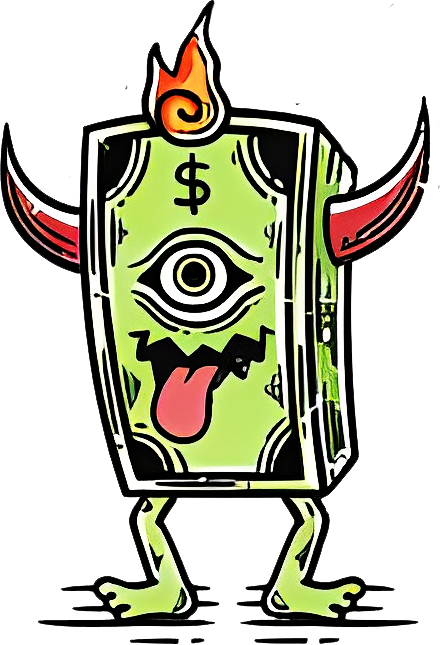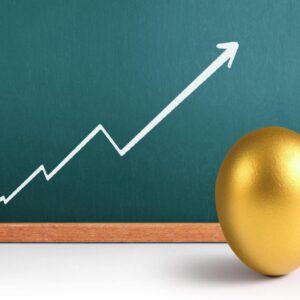
What Is Money? Money is a medium of exchange and store of value, serving as a widely accepted form of payment. It exists in various forms, including fiat money, commodity money, fiduciary money, and commercial bank money, each with distinct characteristics and history.
Table of Contents
Fiat money, such as government-issued currency, is backed by the authority of the issuing government, while commodity money has intrinsic value, like gold or silver. Fiduciary money’s value is derived from a promise of payment, and commercial bank money encompasses credit and loans within the banking system.
The creation of money involves a perpetual interaction between tangible assets, human desires, and faith in value. Understanding the properties, types, and historical evolution of money is crucial in comprehending its role in economic systems and daily transactions.
:max_bytes(150000):strip_icc()/Term-Definitions_Finance-d53e01ed39994c7e959f028374c20ff1.jpg)
Credit: www.investopedia.com
Definition Of Money
Money is a universally accepted medium of exchange for goods and services and is essential for the functioning of economic systems. It serves as a unit of account, store of value, and a standard of deferred payment. In the modern financial world, money takes on various forms, each with its unique properties and characteristics.
Historical Definition
Historically, money was an emergent market phenomenon with intrinsic value as a commodity. However, contemporary money systems are predominantly based on unbacked fiat money, which lacks intrinsic value and is maintained by the trust and faith of the people and the government backing it.
Properties Of Money
- Medium of Exchange: Money facilitates the exchange of goods and services, easing the complexities of barter systems.
- Unit of Account: It provides a standard unit for measuring the value of goods and services, allowing for precise comparisons.
- Store of Value: Money retains its value over time, acting as a means of preserving wealth and purchasing power.
- Fungibility: Each unit of money is interchangeable and equal in value, ensuring uniformity in transactions.
- Market Liquidity: Money can be readily exchanged or used as a means of payment, providing liquidity in the market.
Types Of Money
Money is a system of value that facilitates the exchange of goods and services. Throughout history, money has taken various forms, each serving its purpose in different economic systems. In this section, we will explore the four main types of money: fiat money, commodity money, fiduciary money, and commercial bank money.
Fiat Money
Fiat money refers to currency that is declared legal tender by a government, even though it has no intrinsic value. The value of fiat money is derived from the trust and confidence that people have in the issuing authority. Governments control the supply of fiat money and can manipulate it to stabilize the economy or control inflation. Examples of fiat money include paper currency and coins, such as the Indian Rupee, Brazilian Real, Philippine peso, Israeli new shekel, and Euro.
Commodity Money
Commodity money is a type of currency that has intrinsic value as a commodity. Historically, items such as gold, silver, shells, or even livestock have been used as commodity money. The value of commodity money is derived from the market demand for the underlying commodity. It is generally accepted as a medium of exchange and a (store of value|store of value]] due to its inherent worth. However, the use of commodity money is not as prevalent in modern economies as it once was.
Fiduciary Money
Fiduciary money derives its value from the trust and faith placed in a promise of payment. It is not backed by a physical commodity, such as gold or silver, but rather by the trust of the parties involved. Fiduciary money is usually in the form of banknotes or demand deposits, which represent a claim on a sum of money held by a bank. The value of fiduciary money is dependent on the credibility and stability of the financial institution issuing it.
Commercial Bank Money
Commercial bank money refers to the credit and loans created by commercial banks in the banking system. When you deposit money into a bank, the bank can use that deposit to issue loans and create virtual money in the form of credit. This form of money is a crucial part of modern economies, as it enables lending and investment, driving economic activity. However, commercial bank money is not physical currency and only exists in electronic form as digital balances in bank accounts.
In conclusion, understanding the different types of money helps us grasp the complex nature of our financial systems. From fiat money to commodity money, fiduciary money, and commercial bank money, each type plays a vital role in facilitating transactions and driving economic growth. By having knowledge of these types, we can better comprehend the principles that govern the creation and circulation of money in our modern world.
Creation Of Money
Money is a fascinating concept that plays a crucial role in our modern society. But have you ever wondered how money is actually created? It’s not something that magically appears out of thin air; rather, it is the result of a perpetual interaction between real, tangible things, our desire for them, and our abstract faith in what has value.
Perpetual Interaction
This perpetual interaction involves a complex web of economic activities that fuel the creation of money. It begins with the production and exchange of goods and services. When individuals and businesses produce goods or offer services, they create value that can be exchanged for money.
For example, let’s say a farmer grows a fresh batch of fruits and vegetables. These products have value because they satisfy our desire for nourishment and are essential for our well-being. As a result, people are willing to pay money to obtain these goods.
Similarly, a person with a unique skill, such as carpentry, offers their services to build furniture. Their skill and craftsmanship provide value to customers who are willing to pay for their expertise.
Desire And Value
At the heart of money creation lies desire and value. Money is valuable because we desire it, but we desire money only because it can help us acquire the products and services we desire. It acts as a medium of exchange, allowing us to trade our goods and services for the things we want.
For instance, imagine you have a beautiful painting you created. You want to sell it, but the person interested in buying it doesn’t have anything you desire in return. In this scenario, money steps in as a common unit of value that can be used to facilitate the exchange. The buyer pays you money for the painting, and you can then use that money to buy something else you desire.
This desire for money drives economic activity and propels the creation and circulation of money within the economy. As long as there is a constant desire for goods and services, money will continue to be created and exchanged.
Importance Of Money
Money is a crucial medium of exchange, unit of account, and store of value, driving the economy. Understanding its types, from fiat and commodity money to fiduciary and commercial bank money, is essential. Money is created through a perpetual interaction between tangible goods, human desire, and faith in its value.
Money plays a crucial role in our daily lives and is essential for the functioning of modern economies. It serves as a medium of exchange, a store of value, and a unit of account. Let’s explore each of these aspects in detail:
Medium Of Exchange
One of the primary functions of money is to act as a medium of exchange. Instead of relying on the barter system, where goods and services are exchanged directly, money allows for a more efficient and convenient method of trade. It acts as a universally accepted medium that can be used to purchase any desired goods or services.
Store Of Value
Money serves as a store of value, allowing individuals and businesses to accumulate wealth and save for the future. By holding money, people can postpone consumption and allocate resources to investments or savings accounts. This ability to store value helps in times of economic uncertainty or emergencies, providing financial security.
Unit Of Account
Money serves as a unit of account, allowing us to measure and compare the value of different goods and services. It provides a common standard for pricing and facilitates economic transactions. Without money, it would be challenging to assess the relative worth of products, making economic planning and decision-making much more complicated.
In conclusion, money is of utmost importance in our society, enabling the smooth functioning of economies and facilitating economic transactions. It acts as a medium of exchange, a store of value, and a unit of account, providing individuals and businesses with financial stability, convenience, and an efficient means of trade.
History Of Money
Money, a fundamental tool in society, has a rich history. It started as a commodity with intrinsic value and has evolved into various types, including fiat, commodity, fiduciary, and commercial bank money. Money serves as a medium of exchange, a unit of account, and a store of value, shaping economic systems worldwide.
Money has played a vital role in human civilization, allowing for the exchange of goods and services. Its history dates back thousands of years, and understanding its evolution is crucial for comprehending the intricacies of the modern financial world. Let’s explore the early forms and evolution of money in detail.
Early Forms
In primitive societies, before the emergence of money as we know it today, people relied on barter systems for trade. Bartering involved exchanging goods and services directly without the need for a medium of exchange. However, this system had limitations as it required a double coincidence of wants, meaning both parties had to desire what the other had to offer.
To overcome these limitations, early forms of money evolved. These were typically agricultural commodities, such as grain or livestock, which held intrinsic value and were widely accepted in trade due to their usefulness and scarcity. For example, in ancient Mesopotamia, barley was used as a unit of account and a medium of exchange.
Evolution
As societies advanced, so did the complexity of their monetary systems. The invention of coined money marked a significant milestone in the history of money. Coins made from precious metals, such as gold and silver, were introduced to streamline trade, enhance portability, and ensure the consistency of value.
Over time, various civilizations developed their own monetary systems, introducing standardized coins and even paper money. China, for instance, was one of the early adopters of paper money in the 7th century. These banknotes, backed by the government, served as a medium of exchange and greatly facilitated trade within the region.
Another significant evolution in the history of money was the establishment of a central banking system. This allowed for the issuance of fiduciary money, which derives its value from the trust and confidence people have in it. Commercial bank money, in the form of credit and loans, also became an essential part of the monetary system.
In Conclusion
The history of money is a testament to human ingenuity and the need for an efficient medium of exchange. From the early barter systems to the introduction of coins, paper money, and modern digital currencies, money has continually evolved to meet the ever-changing demands of trade and commerce. Understanding this history is crucial for grasping the complexities of the current monetary systems and the role money plays in our daily lives.

Credit: www.britannica.com
Frequently Asked Questions Of What Is Money? Definition, History, Types, And Creation
What Is The Historical Definition Of Money?
Money historically emerged as a commodity with intrinsic value, but contemporary money systems are based on unbacked fiat money. Money serves as a medium of exchange, unit of account, and store of value. It can be classified as fiat money, commodity money, fiduciary money, or commercial bank money.
What Is The Definition Of Money And Its Types?
Money is a system of value that facilitates the exchange of goods. Its types include fiat money, commodity money, fiduciary money, and commercial bank money. Money is created through the interaction between tangible things, our desire for them, and their perceived value.
What Are 4 Types Of Money?
The four types of money are fiat money, commodity money, fiduciary money, and commercial bank money. Fiat money is backed by a government, commodity money has intrinsic value, fiduciary money derives its value from trust or promise of payment, and commercial bank money is used in the banking system.
What Is Money And How Is It Created?
Money is a system of value that we use to exchange goods and services. It is created through an ongoing interaction between tangible products or services, our desire for them, and our belief in their value. Money has value because we want it, and we want it because it can help us obtain the things we need or want.
Conclusion
Money plays a crucial role in our society as a medium of exchange, unit of account, and store of value. Understanding its definition, history, types, and creation is essential for anyone navigating the financial landscape. From fiat money to commodity money, fiduciary money, and commercial bank money, each type serves a distinct purpose.
By recognizing the perpetual interaction between tangible assets and our abstract belief in value, we can appreciate the significance of money in our daily lives. So whether you’re spending, saving, or investing, having a comprehensive understanding of money is key to financial success.


